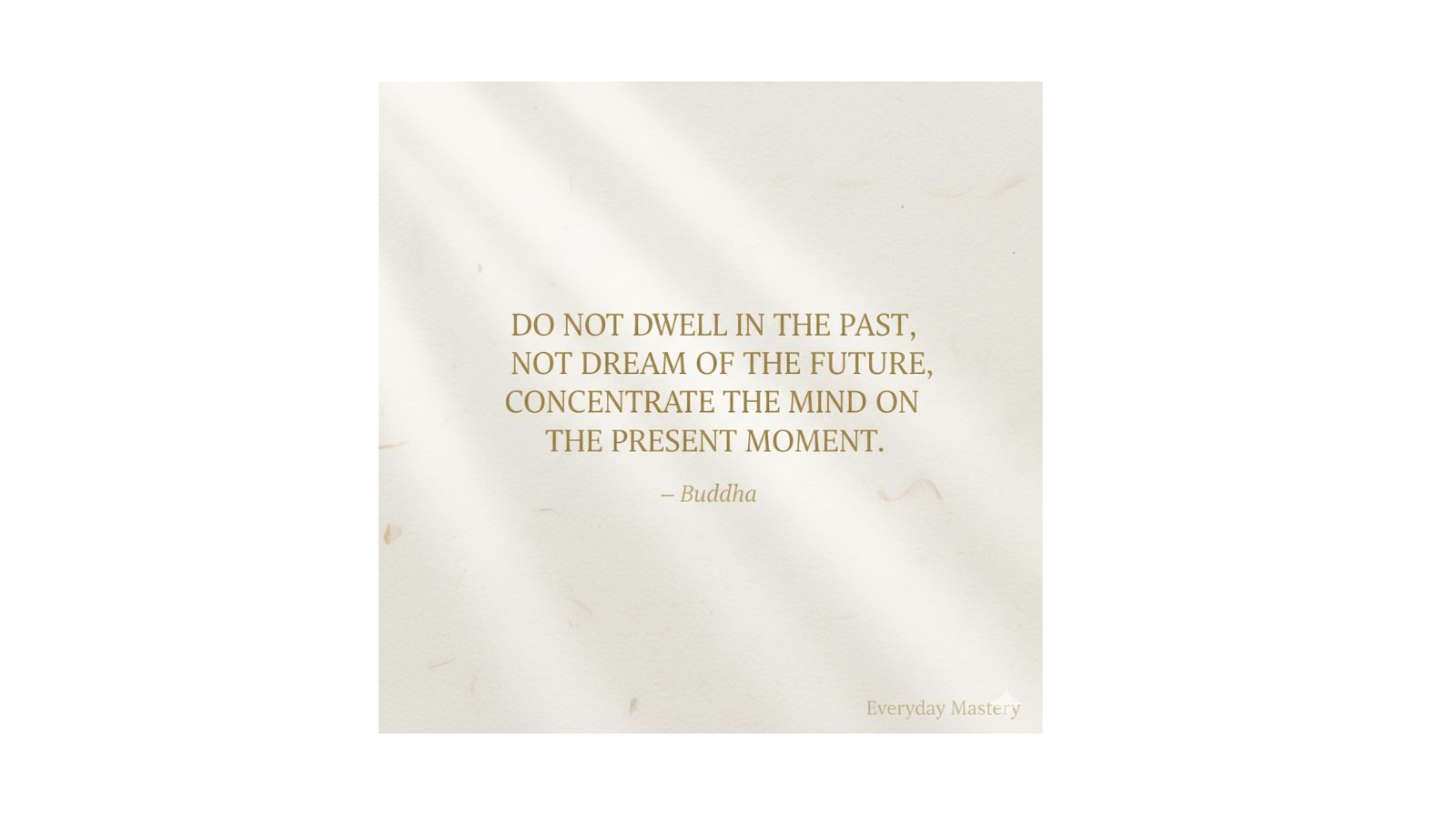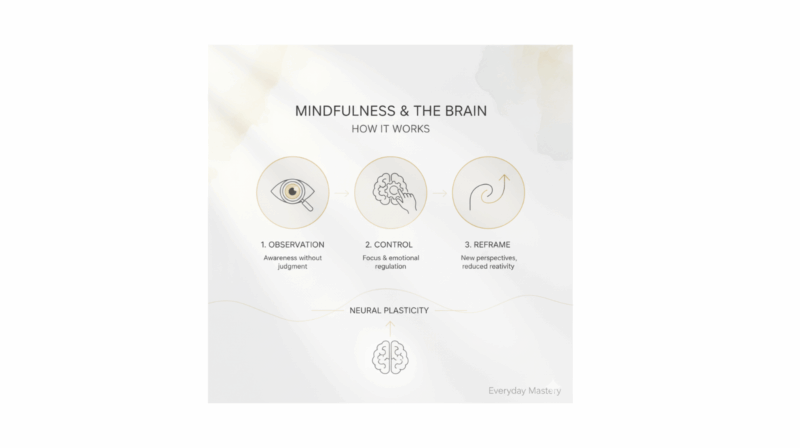I was going through bankruptcy. Completely broke. No income. Couldn’t even afford a coffee.
Yet I was the happiest I’d ever been.
That might sound insane, but it’s the truth. And then I realized something that stopped me cold:
The bankruptcy wasn’t what was destroying me. It was something else entirely.
Years before the bankruptcy, I had been consumed by something far more painful. I wasn’t just replaying the business failure , I was replaying betrayals. The people who’d wronged me. The mistakes I obsessively analysed in my head, over and over again.
Here’s what shocked me: Those people weren’t losing sleep. I was torturing myself so they could be free. I was carrying the weight of their actions while they moved on with their lives.
That’s when I asked the question that changed everything: “Why am I punishing me for what they did?”
The event is over. But you keep making it present by giving it power over this moment.
A note before we begin: I’m not a therapist or psychologist. I’m someone who went through bankruptcy and used these frameworks to rebuild. This article combines personal experience with research-backed methods. For serious trauma, please work with a licensed professional.

In This Guide:
- The Problem: Why You Can't Let Go of Painful Memories
- What Does It Mean to Let Go of the Past?
- The 3-Step Framework for Letting Go of Trauma
- Your Daily Practice: Starting Today
- Why This Actually Works: The Science Behind Letting Go
- What I Learned From My Own Journey
- Frequently Asked Questions
- Your First Step
- Additional Support in the UK
- Resources
The Problem: Why You Can’t Let Go of Painful Memories
You replay it. Analyse it. Wonder why it happened. And every time you relive it, your body feels the same pain all over again.
The sexual abuse. The infidelity. The disappointments. The betrayal.
None of it was about my worth. It was about their struggles, beliefs, limitations.
Here’s what most people miss: The past doesn’t have to define you. But letting go of the past isn’t about “moving on” — it’s about completely changing how you think about what happened.
What Does It Mean to Let Go of the Past?
Letting go does NOT mean:
- Pretending it didn’t happen
- Excusing what was done to you
- Never feeling pain again
Letting go DOES mean:
- Refusing to give the past power over your present
- Finding the lesson without replaying the trauma
- Choosing who you become despite what happened
The key shift: From being controlled by what happened to being empowered by how you respond.
The 3-Step Framework for Letting Go of Trauma
This comes from ancient wisdom—Stoic philosophy and Buddhist mindfulness—that’s helped millions for thousands of years.
Step 1: Separate What You Control From What You Don’t
At some point in my healing, I discovered Marcus Aurelius. One quote hit differently:
“You have power over your mind — not outside events. Realize this, and you will find strength.”
It validated what I was already learning through painful experience. This wasn’t just philosophy—it was a paradigm shift that saved my sanity.
What you cannot control:
- What happened
- Other people’s actions
- How others treated you
What you can control:
- How you respond to memories right now
- The meaning you give to past events
- Who you choose to become
The daily practice: When a painful memory comes up, ask: “What part of this can I control?”
The answer is always: only how you respond in this moment.
During my bankruptcy, I couldn’t control what other people did. But I could control my response. That shift—from drowning in what I’d lost to focusing on what I could build—changed everything.
Other people’s actions are reflections of themselves, not your worth. I stopped carrying their weight because none of it was about me. It was about their struggles, beliefs, limitations.

Step 2: Is Mindfulness Effective for Overcoming Trauma? (And How to Practice It)
Buddhist mindfulness (Sati) became my daily lifeline. The breakthrough: You are not your thoughts. You are the person watching your thoughts.
I still get old traumatic thoughts popping up. The difference now? I feel them, observe them, and let them pass.
The 4-step mindfulness practice:
- Notice: “There’s that memory again”
- Feel: “I feel anger/sadness/shame” (without judgment)
- Let it pass: “This is a thought. It will move through me”
- Return to now: Focus on your breath, this moment
Why this works (the science):
Every time you replay a painful memory, your brain carves it deeper. A 2024 study in Biological Psychiatry showed that mindfulness training actually changes your brain during painful memories. People who practiced mindfulness showed less activity in the brain regions that make you overthink and replay trauma.
Dr. Andrew Huberman explains: “The nervous system doesn’t distinguish between a real threat and a memory of a threat.” But you can literally change how your nervous system responds through daily practice.

Step 3: Turn Obstacles Into Teachers
In Buddhism, failure is a catalyst for growth. Stoicism teaches that obstacles are opportunities.
Every challenge can teach you something.
Instead of asking: “Why did this happen to me?”
Ask: “What did this teach me about strength, boundaries, what I value?”
When my business failed and bankruptcy loomed, I could see it as proof of worthlessness. Or as a teacher.
I chose the latter.
I stopped asking “Why me?” and started asking “What now?”
- What went wrong? (Information, not shame)
- What can I learn? (Growth, not blame)
- How do I adjust? (Action, not paralysis)
The result: The bankruptcy that could have destroyed me became the experience that taught me what actually matters. The pain became purpose.
Ready to start new habits?** Download my free Small Habits Guide including weekly checklist
Special Case: How to Forgive Someone Who Hurt You and Let Go
The hardest memories to release are usually tied to people—betrayal, abandonment, heartbreak.
The 3-part practice:
1. Accept you may never get an apology
Their failure to apologize is about them—their awareness, growth, limitations. Your healing doesn’t require their participation.
2. Feel the anger/hurt when triggered
Notice it. Feel it fully. Let it pass. You’re not burying it—you’re refusing to replay it.
3. Ask: “What did this teach me?”
Maybe it showed you your own strength. Maybe it revealed what you truly need. You’re releasing the weight so you can move forward.
The hard truth: The person who hurt you might never change, never understand, never apologize. But that doesn’t mean you have to carry it forever.
Your Daily Practice: Starting Today
You don’t need hours of meditation. Start with these simple routines:
Morning (5 minutes)
- Read one wisdom quote
- Journal: “What can I control today?”
When Painful Memories Show Up
- Notice: “There’s that memory again”
- Feel it without judgment
- Remind yourself: “I am not my thoughts”
- Take three deep breaths
Evening (5 minutes)
- What challenged me today?
- What did I learn?
- How did I grow?
Write it down. Small shifts add up.
Still carrying guilt over what happened? Take the next step with How to Forgive Yourself and Stop Fighting the Past a calm, practical guide to releasing shame and moving forward.

Why This Actually Works: The Science Behind Letting Go
Modern psychology confirms what ancient thinkers knew: You can’t control events, but you can control how you think about them.
Research in the British Journal of Psychiatry found that learning to identify and change distressing thoughts significantly reduced PTSD symptoms. Research on post-traumatic growth shows that people who find meaning in hardship often come out stronger than before.
Your pain can become your wisdom. Your struggles can become your strength.
One of the most powerful ways to accelerate healing after trauma is helping someone else struggling with something similar. When you give back—share your story, offer support—you transform from “the person who suffered” to “the person who learned and grew.”
What I Learned From My Own Journey
When I started implementing this framework during my bankruptcy, I expected it would take months to feel relief.
It took weeks.
Not weeks to “be over it.” But weeks to notice that painful memories had less power. That I could think about betrayals without my chest tightening. That I could journal about the business failure without shame.
Most importantly: The framework only works if you actually practice it.
You can read this and nod along. But reading isn’t practicing. Understanding isn’t transformation.
The difference between knowing and doing is everything.
Here’s what I tell everyone: Pick one step. Practice it for seven days. Just one. Your brain needs time to rewire.
I started with Step 1—the Control Question. Every time a painful memory came up, I asked: “What can I control right now?”
That single question saved me during those dark months. Because the answer is always the same: only my response in this moment.
From that foundation, everything else became possible.
Frequently Asked Questions
How do I let go of the past?
Start by separating what you can control (your response) from what you can’t (the event itself). Then practice observing painful thoughts without replaying them, and finally, ask what the experience taught you about yourself.
More specifically: When a painful memory comes up, ask “What can I control right now?” The answer is always only your response in this moment. From there, everything else becomes possible.
Can mindfulness help with trauma recovery?
Yes. Mindfulness doesn’t make painful memories disappear—it changes how you relate to them. Instead of drowning in them, you observe them and let them pass. Research in Biological Psychiatry shows mindfulness training actually changes your brain during painful memories, reducing activity in regions that make you overthink and replay trauma.
What is the Stoic approach to healing emotional pain?
Stoicism teaches that you have power over your mind but not over outside events. The framework: identify what you can control (your response, the meaning you give events, who you become), accept what you can’t (the past, other people’s actions), and use obstacles as teachers that reveal your strength and values.
Marcus Aurelius said it best: “You have power over your mind—not outside events. Realize this, and you will find strength.”
How long does it take to let go of the past?
There’s no timeline. The goal isn’t to “be over it by [date]”—it’s building the daily habit of noticing thoughts without drowning in them. Progress adds up over time. Some people feel relief within weeks of consistent practice. Others need months or years. What matters is the practice, not the pace.
Can I use this for really serious trauma?
Philosophy is powerful, but severe trauma needs professional support. Use these practices alongside therapy, not instead of it. A therapist can help you process trauma safely while philosophy gives you daily mental tools to rewire your nervous system over time.
Your First Step
You don’t need to master ancient philosophy overnight. Pick one practice this week:
Option 1: The Control Question When a painful memory comes up, ask: “What can I control right now?” Answer: Only my response.
Option 2: Thought Observation Notice when you’re replaying the past. Say: “There’s that thought.” Don’t fight it. Just watch it pass.
Option 3: Daily Reframe Evening journal: “What did today’s challenge teach me?” Find one lesson.
Pick one. Practice it for seven days. Then add the next.
The Bottom Line
You’ve been carrying weight that was never yours to hold.
Other people’s actions were about them—their struggles, beliefs, limitations. Not your worth.
The past happened. It was real. It may have been awful. But it’s over. And you can choose to stop making it present.
Stoicism teaches you where your power lies. Buddhism teaches you how to let thoughts pass. Both teach you that your obstacles can become your way forward.
“You have power over your mind—not outside events. Realize this, and you will find strength.” — Marcus Aurelius
The question isn’t whether the past will try to pull you back. It will.
The question is: Will you keep giving it power over your present?
Next Steps
Want the daily habits that make this framework stick? 👉 Download: Free Small Habits Guide — includes the 5 practices I used during my bankruptcy to build new thought patterns
Want weekly wisdom on transformation? 👉 Join the Everyday Mastery Newsletter

Journaling Prompt: Start Now
What did this experience teach me about my strength?
Which Events am I holding onto from the past?
How can I control this right now?
If this post helped you, you can buy me a coffee to support more writing like this. Your encouragement means more than you know. Please leave a comment—you are not alone.
Additional Support in the UK
If you need professional support alongside these practices, the NHS offers free mental health services through your GP. Organizations like Mind UK and the British Association for Counselling and Psychotherapy can help you find accredited trauma therapists.
Resources
Dr. Andrew Huberman – Stanford neuroscientist, host of Huberman Lab podcast on stress management and nervous system regulation
The Daily Stoic by Ryan Holiday (Podcast & Book)
Meditations by Marcus Aurelius
The Obstacle Is the Way by Ryan Holiday
Man’s Search for Meaning by Viktor Frankl
Buddhist Mindfulness (Sati) techniques
Stoic daily reflection exercises
Mueser, K. T., et al. (2015). “Evaluation of cognitive restructuring for post-traumatic stress disorder in people with severe mental illness.” British Journal of Psychiatry, 206(6), 501-508.
Roepstorff, A., et al. (2023). “Mindfulness Training Changes Brain Dynamics During Depressive Rumination: A Randomized Controlled Trial.” Biological Psychiatry: Cognitive Neuroscience and Neuroimaging, 8(5), 501-511.
Kel is the writer behind Everyday Mastery, where she shares the real, messy, and meaningful process of building habits, resilience, and self-belief from the ground up. Her writing blends ancient philosophy with modern science, always focused on small, practical steps that lead to lasting





